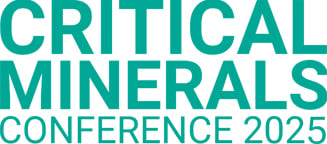Australian Mining: Towards a sustainable future
Australian Mining spoke with Rio Tinto managing director battery metals Marnie Finlayson ahead of AusIMM’s Critical Minerals Conference 2023.

The Age-Old Mining Dilemma
As AusIMM gears up to host its inaugural Critical Minerals Conference in Perth from November 21–23, Australian Mining sat down with Rio Tinto managing director battery metals Marnie Finlayson to discuss her keynote speech and the broader critical minerals industry.
Can you tell me about your role at Rio Tinto?
I grew up on a large sheep station in the Northern Goldfields region of WA, where our property was surrounded by both gold and nickel mining. This gave me an early taste of the industry as well as the deep understanding of Traditional Owners’ connection to land.
I have taken these early experiences into my professional career and am passionate about minimising impact to mining on the environment, partnering with local communities and First Nations people to create meaningful and sustainable partnerships, whilst delivering the materials that the world needs to decarbonise.
My role at Rio Tinto allows me to follow these passions and integrate them into our business unit strategy, with my primary objective to build a world-leading battery materials business.
What is the greatest challenge facing the Australian critical minerals industry?
Australia has the natural resources, industry, experience and R&D (research and development) required to drive the clean energy transition and extract maximum potential for our industry to the benefit of Australia.
We have heard from other jurisdictions that are impressed with how Australia has been at the forefront of the critical minerals issue. But Australia will need to act quickly as competition increases in this market.
Government and industry support will need to be focused over the long-term, as existing positions have taken a long time to form, and commitment and dedication will be required to build more resilient supply chains.
From a regional community perspective, it is important that suppliers of critical minerals (miners, processors and other service providers), as well the providers of the renewable energy linkages, engage early with communities to understand their needs, mitigate and manage negative impacts, and ensure potential economic and social benefits are optimised.
What are your hopes for critical minerals mining?
Global demand for the critical minerals that enable the energy transition is quickly outpacing supply, setting the scene for a new kind of mining boom in Australia and beyond.
My hope is that this mining boom delivers jobs and skills, whilst prioritising environmental impact. This is no mean feat and will require a change in mindset in terms of what we mine, how we mine and who we partner with.
I will be talking more about this in my keynote at the AusIMM Critical Minerals Conference.
Can you give me an overview on your speech?
Our job at Rio Tinto is to find better ways to provide the materials the world needs and the key challenge will be to provide for these needs at pace, reliably and with a low-carbon footprint in partnership with society.
Against this context, and drawing on experience and examples, I will be talking about the challenges and opportunities for the mining industry to meet the demand for critical minerals that are fundamental to the energy transition.
Who should attend the conference?
In addition to anyone directly involved in the critical minerals industry, I would encourage those interested in technology and innovation, sustainability, market development and the role of governments and industry in finding solutions to complex problems.
This is a broad ranging conference with wide appeal – it isn’t just about electric vehicles.
What would people be surprised to learn about critical minerals?
I think people may be surprised at how far a company like Rio Tinto, built on the back of bulk commodities like iron ore, aluminium and copper, has pivoted in its commitment to climate change and decarbonisation – we see ourselves as a critical enabler for the energy transition.
I appreciate many are sceptical about the ability of the mining industry to deliver on the climate front, beyond issuing ambitious and long-dated targets. That’s why we’re sharing a clear pathway to material reductions by the end of the decade, including setting up our battery materials business, working hard on technology partnerships together with a strong commitment to circularity.
The road to net-zero needs mining – electric vehicles, solar panels, wind turbines and the like – but we must mitigate the risk to the environment and the communities we operate in, around the world.
This feature appeared in the November 2023 issue of Australian Mining.
Article by: By Alexandra Eastwood
To register for the Critical Minerals Conference 2023, click here.
To view the conference program, click here.
